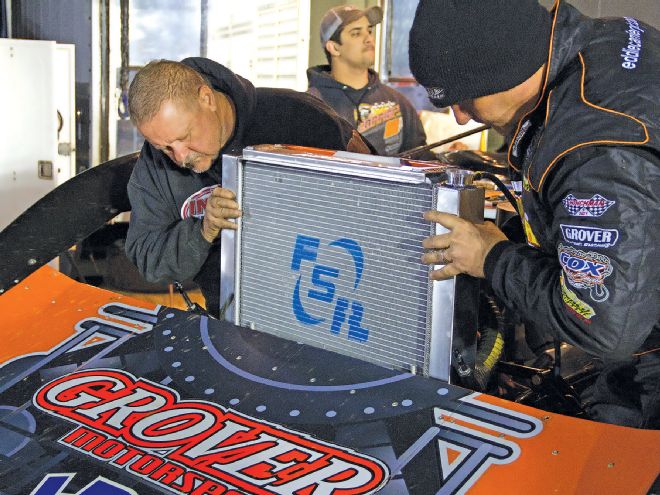
How hot does your engine run? Is it on the cool side? The hot side? Where should it be? How big of a radiator should you run? Antifreeze or water? Tap or distilled? Do you need a pressurized cooling system? What is a pressurized cooling system?
The answer is yes—you need to know more about the cooling system in your race car.
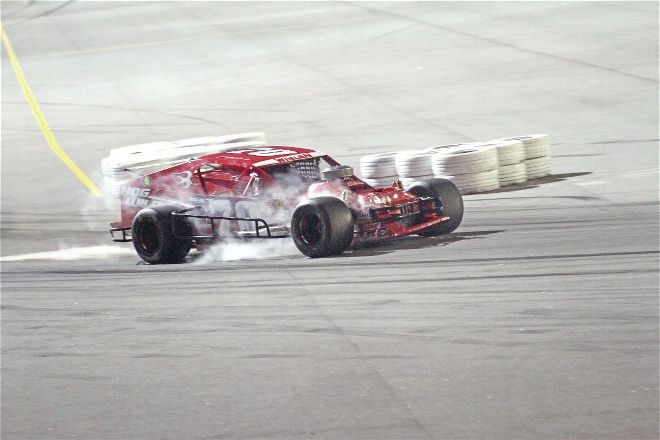 Overheating on track is not how any racer wants to end his or her day. Be sure to inspect your system regularly so this doesn’t happen to you!
Overheating on track is not how any racer wants to end his or her day. Be sure to inspect your system regularly so this doesn’t happen to you!
Granted, a book could be (and probably has been) written about each aspect of the cooling system of a race car (and you should go find them and read them). Though we don't have the room to cover everything, we'll hit as much as possible, starting with the basics.
What is the purpose of the cooling system? An internal combustion engine is simply a self-driven air pump. Fuel and air are ignited, blah, blah, blah—you know all that. A huge byproduct of making power is heat, and that heat needs to be removed from the engine. Water is a clean and efficient way to do just that.
In a cooling system, fluid is pumped through the engine (through the cylinder heads and around the cylinders). As fluid passes through, it absorbs heat from the combustion process, but the heat needs to be removed from the fluid. Enter the radiator. Radiators are a combination of tanks, tubing, and fins that work together as a heat sink, removing the heat from the fluid as air passes though. You knew all that, so you must be a cooling expert, right? Wrong! That is as basic as it gets. When it comes to racing, everything is a science, and the level of technology is simply astonishing. From the materials, to the design, to the speed of the fluid passing through the engine and radiator, an effective, efficient cooling system is a highly calculated orchestra where every part of the system works together.
The closed coolant system has been the norm for street and race cars for some time. The system is fairly simple. Fluid is pumped through the engine and cylinder heads by the water pump. The coolant absorbs heat from the engine and the coolant is cooled in the radiator. Though the closed system is efficient enough for most short track racing, as races get longer and cars race closer (nose to tail) for longer periods, the closed system needs more air than the radiator gets in many cases. The byproduct is higher coolant temperatures, often resulting in the engine overheating, which can lead to engine damage.
If you run in the lower levels of short track racing where you races don't normally exceed 50 laps, this is all you need. In most cases, depending on where you live and the climate you race in, a stock or stock-style radiator is all you need to efficiently keep the engine cool enough for Saturday night.
If you run a Super Late Model, or compete in races of 100 laps or more, you may want to look at a pressurized coolant system.
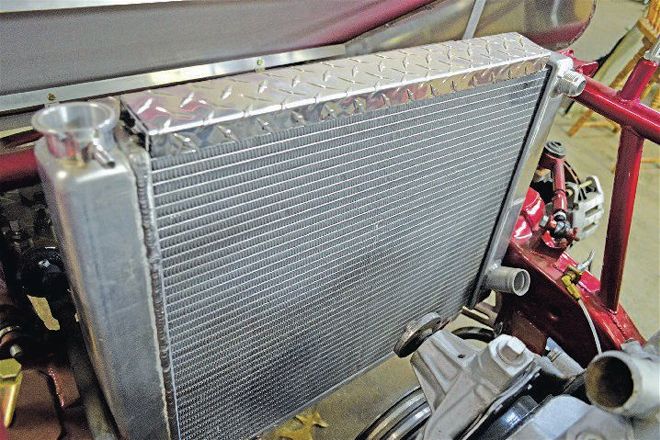
1. The heart of any cooling system is the radiator. It plays an integral part of the system by removing heat from the coolant as it passes through the core. Air moving through the radiator cools the coolant.
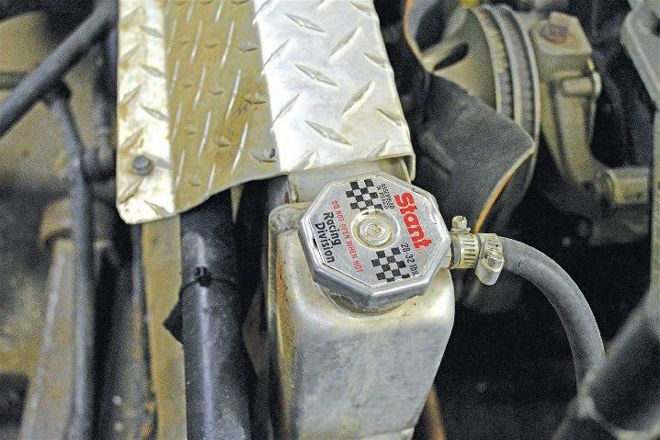
2. The radiator cap helps control the pressure in a traditional closed coolant system.
Pressurized water systems are relatively new to the short track and stock car world. This technology has been around in F-1 and Indy Cars for many years. It's more efficient and more failsafe than the customary closed cooling system that has been around for the last 80 years. This is the future for cooling systems that will make it's way into the stock car and short track arenas over the next few years.
Pressure in a cooling system is vital for keeping water in contact with the metal surfaces of the cylinder heads and block. Pressure keeps the air compressed and maintains the water-to-metal contact that is vital to prevent localized boiling or steam pockets in the combustion chamber areas of the cylinder heads. When a situation occurs that causes temperatures to rise such as lean fuel mixture, too much ignition advance, or a clogged radiator, the air in the water will expand and form small steam pockets. This will start in the combustion chamber area (hottest spot) and the steam pocket will be attached to the metal surface. These spots get very hot and since it's in the combustion chamber area, it will create a detonation problem. This is why engines lose power when overheating occurs. Once steam starts in the cooling system, the problem will magnify and continue to get worse.
By keeping adequate pressure in the system, the boiling point will be high enough that this overheating situation can be prevented. The higher the pressure the higher the boiling point. For instance, at sea level with a 30-pound cap the boiling point would be around 265 degrees. With a pressurized system and an adjustable pressure relief valve instead of a radiator cap, the system will go higher than 30 psi. The other components in this system are an accumulator and a tool to set the pressure in the system. The accumulator is a can, similar to a header tank, which the air bleeds into from the cooling system. This can also has a controlled air space that acts as an air spring. This air spring will compress under temperature expansion and keep water from going out the overflow. It keeps the pressure in the system and is the place where the system pressure is set.
With a pressurized system the engine can actually operate at higher temperatures safely. On a circle track car more tape can be applied to the grille opening making it more aerodynamic. There is a bigger safety margin for error such as clogging the radiator or running to lean on fuel mix. You can run leaner for power and not be in the danger zone of overheating. As an example, most F-1 teams will run cooling system pressures as high as 50 psi and will race all day with temps at 265 degrees.
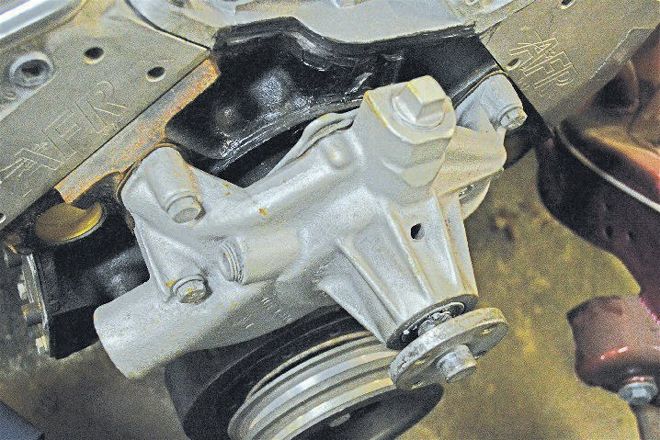
3. The water pump pushes coolant through the cylinder heads and engine. The water pulls heated combustion process.
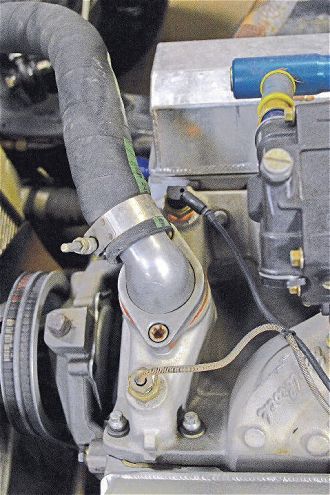
4. The water neck connects the radiator hose and intake manifold where the coolant is directed into the cylinder heads.
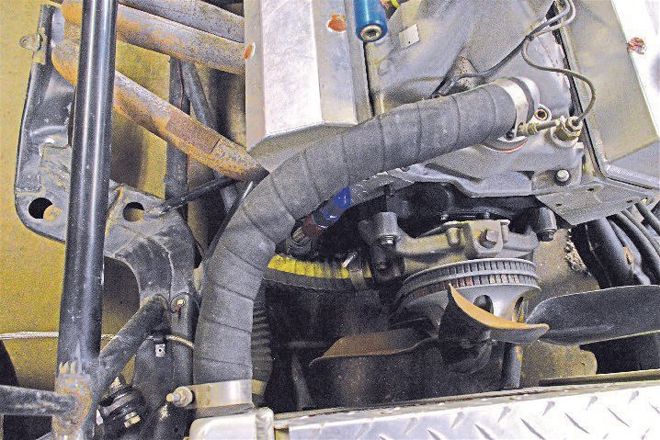
5. High quality radiator hoses are very important in the harsh environment of racing. Be sure to use hoses tough enough for racing or stong enough for a pressurized system.
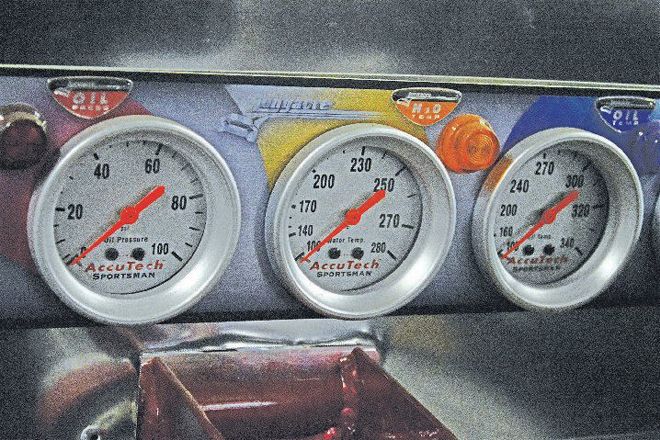
6. Accurate gauges are essential in a race car. Monitoring your engine’s vitals is very important for ensuring parts don’t get torn up.
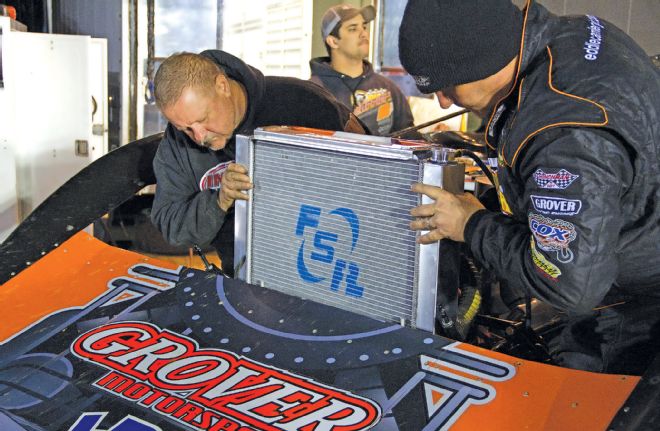
7. Radiators can take a beating, especially in dirt racing. Be sure to regularly check your radiator for clogs in the core, bend fins, or other damage that could reduce the radiators cooling capabilities. This could result in overheating and damage to the engine you’ve worked so hard to pay for.
Distilled water, done. Antifreeze is good for corrosion protection and keeping the system from freezing in the winter, but that's about it. Plus, if you dump antifreeze on your track, you may be asked to go home and think about what you did for a while before you are allowed to race again.
Tap water or hose water is full of minerals that can very corrosive. It can literally fill your brand-new radiator with rust and gunk from the engine. It can kill a water pump, and rust in the coolant system makes its very inefficient.
When it comes to coolants and cooling properties, C&R Racing tells us nothing is better than straight water. It pulls the most heat from the engine and sheds heat in the radiator more efficiently than anything else.
There are countless additives on the market that claim to drop coolant temperatures, but according to C&R, none of them will have much of a positive effect on water temp. Now that's not to say you shouldn't run an additive. Like any other system, your cooling system needs to be lubricated. A good cooling system additive like Driven Racing Oil's Coolant System Protector does a great job of lubricating the water pump and making sure the mineral properties of water do not cause corrosion in the engine, cylinder heads, or radiator.
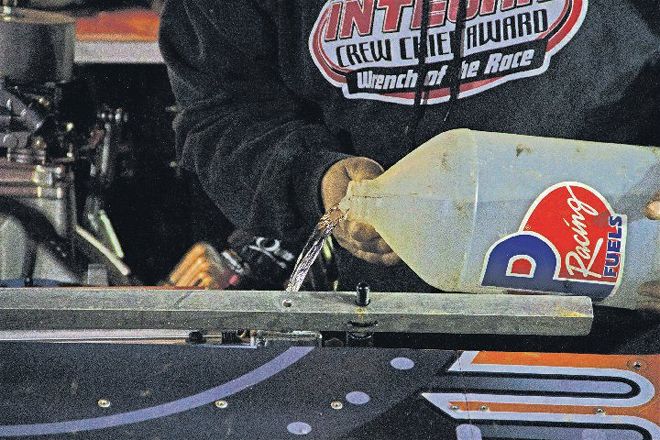
8. The best coolant for race cars is straight distilled water. Tap water has minerals that make it very corrosive. Distilled water will prevent corrosion, which can seriously diminish the efficiency of a cooling system. Additives like Driven Racing Oil’s Cooling System Protector do a great job of lubricating the system and preventing rust.
The design of the airbox is a very important thing. The shape of the airbox and the front opening controls the air that moves through the radiator. In a Super Late Model that may run at higher speed, you may not need as large of a front opening as a slower car like a Street Stock that isn't going to gain from the aero advantage of a smaller opening.
The airbox is there to direct the incoming air into the radiator, but it also acts as an expansion chamber for the incoming air to slow down before going through the radiator. The high velocity air comes in the front opening and slows down as the airbox becomes larger. The benefit here is slower moving air will remove more heat from the radiator as it spends more time passing through the core. If the air moves too quickly through the radiator, it won't pull enough heat out of the coolant passing through it. This can result in high engine temps.
Cooling your race car is extremely important, and there are different ways to do it. Going through your coolant system (at least checking the radiator for a clogged core) should a part of your regular maintenance routine. The coolant should also be changed and the system flushed on a regular basis to ensure the system is in perfect working order. If you run a pressurized coolant system, it is key to set the pressure before each race, and be sure there is no air in the system. With a properly operating cooling system, you'll stay cool on track lap after lap!
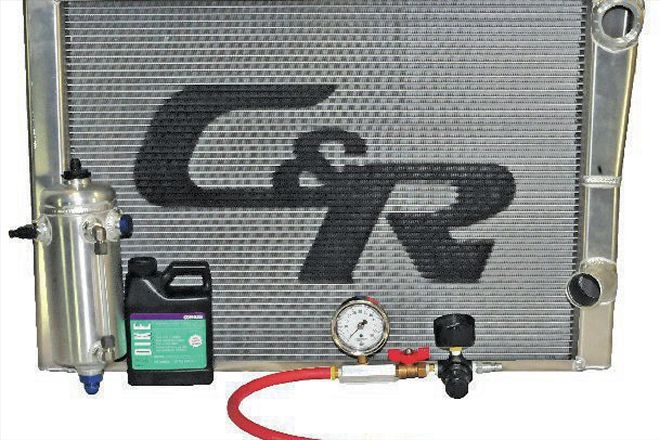
9. If you run longer races and need more downforce, a pressurized cooling system may be the best thing for you. The pressurized cooling systems keep the water in contact with hottest parts of the engine. Because the system is air-free and under pressure, there are no steam pockets that form hot spots allowing you to run longer and hotter.
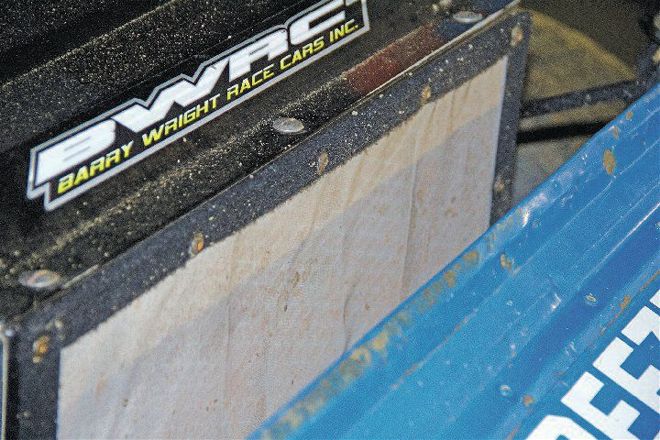
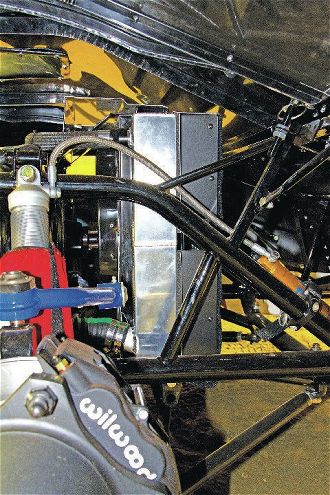
10 A-B. Protecting your radiator from debris is extremely important, especially in a dirt car. Many companies offer protective screens that flow enough air to cool the fluid in the radiator and also keep the dirt out of the core.